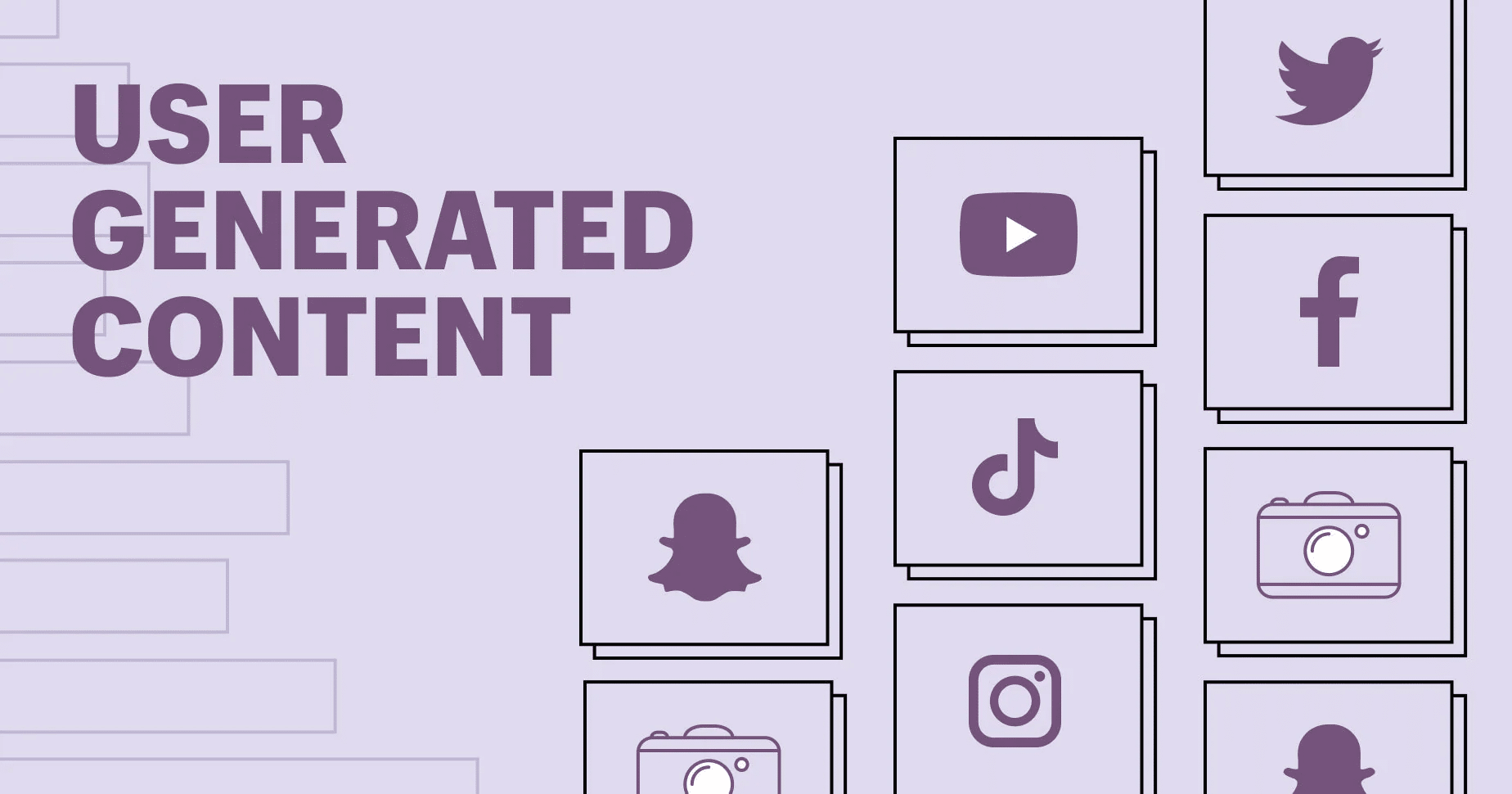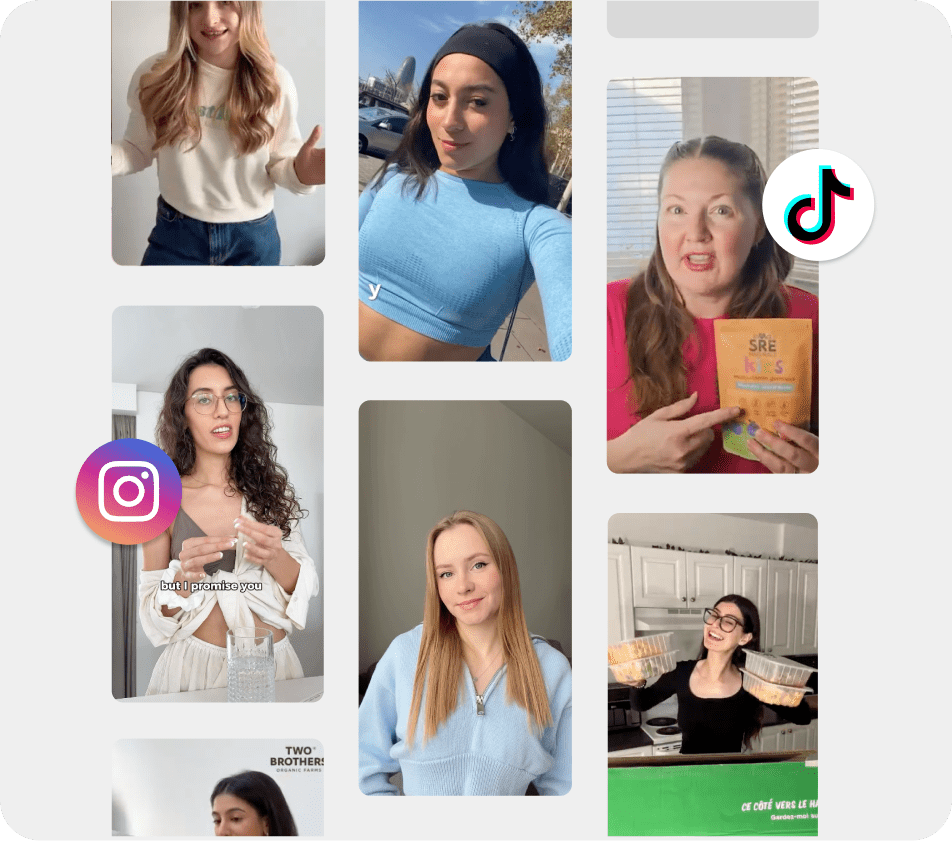Today, an astonishing 90% of consumers say that UGC influences their purchasing decisions more than any other form of advertising. This shift in consumer behavior underscores the immense power wielded by content created not by brands but by the individuals who interact with them.
Social media platforms alone witness a staggering 25% increase in engagement when brands incorporate UGC into their strategies. Furthermore, studies reveal that a remarkable 85% of users find UGC more influential than brand-generated content.
In this digital era, where authenticity reigns supreme, and trust is paramount, UGC emerges as a pivotal force. It encompasses a diverse array of content – from captivating photos shared on Instagram to insightful reviews posted on various platforms. Understanding the nuances and impact of these diverse content types is crucial for brands seeking genuine connections with their audiences.
What is UGC?
User-generated content (UGC) refers to any form of content—text, images, videos, or reviews—created and shared by individuals rather than brands or official entities. It includes content found on social media, forums, blogs, and other online platforms where users share their experiences, opinions, or creativity.For a social media marketing agency, UGC is a valuable asset that helps build trust, engage audiences, and enhance brand authenticity. By leveraging user-generated content, a social media marketing agency can create more relatable and impactful campaigns that resonate with potential customers.
UGC is characterized by its authenticity, as it reflects the unfiltered thoughts, experiences, and perspectives of real users. Brands often leverage UGC as a powerful marketing tool, as it fosters genuine engagement, builds trust, and amplifies brand reach through the endorsement and contributions of its audience.
Types Of User-Generated Content
Diverse and dynamic, User-Generated Content (UGC) comes in various engaging forms. From vivid visuals on social platforms to authentic reviews and interactive contests, each type offers a unique way for users to connect with brands.
Embracing this array of UGC bolsters brand authenticity and nurtures meaningful engagements, laying the groundwork for lasting brand-consumer relationships.
Majorly these are the popular types of UGC-
- UGC Photos
- UGC Videos
- Reviews and Ratings
- Testimonials
- Q&A and Discussion Forums
- Competitions and Contests
UGC Photos
Visual content has a strong impact. Instagram, Facebook, Pinterest, and LinkedIn serve as major platforms where users share images related to experiences, products, or services, allowing brands to tap into these visuals for marketing purposes.
UGC Videos:
Video content is increasingly dominant. Platforms like Instagram, TikTok, and YouTube host a myriad of user-generated videos, ranging from tutorials and reviews to entertaining clips. Brands can leverage this engaging format for promotional purposes.
Reviews and Ratings:
Often found in unboxing videos, product reviews, or written feedback, these user opinions provide valuable insights for potential customers. They influence purchase decisions and build trust in the brand or product.
Testimonials:
Client videos, case studies, and comments offer firsthand accounts of positive experiences with a brand or product. These authentic stories can significantly impact brand credibility.
Q&A and Discussion Forums:
Feedback forms, online forums, and community discussions enable users to engage directly with brands. Addressing queries and concerns in these spaces fosters trust and loyalty.
Competitions and Contests:
These encourage user participation and content creation. Contests prompt users to generate content based on specific themes or challenges, effectively increasing brand visibility and engagement.
Each type of UGC provides a distinct way for users to interact with brands and share their experiences, opinions, and creativity. Incorporating these varied forms of content into marketing strategies can enhance brand authenticity, engagement, and trust.
Benefits of User-Generated Content
From fostering genuine connections through personal stories to significantly impacting purchasing decisions. The benefits of UGC deeply with audiences, its credibility, memorability, and SEO advantages make it a powerful tool for brands seeking to forge lasting emotional bonds and drive conversions. Leveraging UGC not only amplifies brand authenticity but also catalyzes meaningful engagement and brand loyalty.
1. Authenticity is a Necessity:
UGC embodies genuine, unfiltered opinions and experiences shared by real users. This authenticity resonates with audiences weary of polished brand messaging, fostering trust and credibility.
2. Highly Trustworthy & Reliable:
Users tend to trust content generated by their peers more than promotional material from brands. This trust translates into increased information reliability, influencing purchasing decisions.
3. UGC Is Memorable:
Human stories, testimonials, and visual content shared by users create lasting impressions. These personal narratives are more likely to be remembered and shared among consumers.
4. Easy & Efficient Access to Valuable Content:
UGC provides a steady stream of content for brands to leverage. It reduces the burden of constantly generating content internally while tapping into a goldmine of diverse, user-created material.
5. SEO Benefits:
UGC boosts SEO efforts. User-generated reviews, comments, and social shares add fresh, keyword-rich content that enhances search engine visibility and rankings.
6. Emotional Connections:
Personal stories and experiences shared through UGC establish emotional connections between brands and consumers. This emotional resonance can lead to increased loyalty and advocacy.
7. UGC Drives Conversions:
UGC, particularly reviews and testimonials, influences purchasing decisions. When potential customers see positive experiences shared by others, it often leads to higher conversion rates.
How to Encourage User-Generated Content Creation
Encouraging User-Generated Content (UGC) creation thrives on fostering a collaborative environment that values creativity and engagement. Identifying trends, hosting engaging contests, and providing clear guidelines form the bedrock for UGC initiatives.
Crafting dedicated hashtag campaigns and crediting original creators when reposting content not only sparks participation but also nurtures a community-driven approach that celebrates and amplifies user contributions.
This collaborative spirit not only generates content but also cultivates meaningful connections, shaping a vibrant ecosystem where both brands and users flourish together.
Identify Consumer Trends:
Stay updated on industry trends and monitor what content resonates most with your audience. This insight helps tailor UGC campaigns that align with current interests and preferences.
Host Hashtag Contests:
Launching contests with specific hashtags encourages users to create content centered around your brand or a particular theme. This not only generates content but also boosts brand visibility and engagement.
Give Them Guidelines Around Content Creation:
Providing clear guidelines ensures that user-generated content aligns with your brand’s message and quality standards. It also helps users understand what kind of content the brand is likely to feature or share.
Create Hashtag Campaigns:
Crafting dedicated hashtag campaigns allows users to contribute content under a unified theme. These campaigns can range from storytelling initiatives to product-specific hashtags, fostering a sense of community and participation.
Give Credit while Reposting on Social Media:
When brands repost or share UGC, crediting the original creator not only acknowledges their contribution but also encourages others to create content with the hope of being featured. This acknowledgment strengthens relationships with users and incentivizes further content creation.
Getting Rights to User-Generated Content
Engaging directly with content creators on social media and crediting their contributions not only showcases appreciation but also establishes clear communication about usage rights.
Maintaining transparency, utilizing UGC rights management platforms, and prioritizing strong brand-customer relationships underscore an ethical approach to obtaining and repurposing UGC, safeguarding both user rights and brand integrity.
Ask Directly on Social Media:
Request permission directly from the UGC creator when you identify the UGC you’d like to use. This direct approach establishes transparency and allows for a clear conversation about usage rights.
Give Credits to the Original Creator:
Crediting the original creator when sharing their UGC showcases appreciation for their contribution. It’s not only ethical but also encourages further content creation by acknowledging and promoting user participation.
Be Transparent With What You Seek:
Clearly communicate to users what rights you’re seeking when they create content related to your brand. This transparency sets expectations and avoids misunderstandings regarding content usage.
Choose a UGC Rights Management Platform:
Utilizing a UGC rights management platform can streamline the process of obtaining permissions, managing rights, and tracking the usage of UGC. These platforms often provide tools for seeking consent and organizing permissions efficiently.
Maintain Brand-Customer Relationships:
Building strong relationships with your audience is key. When seeking rights to UGC, ensure your approach is respectful appreciative, and fosters a sense of collaboration rather than exploitation.
Protect User Rights:
Respect user privacy and rights when using their content. Ensure compliance with legal regulations, seek consent, and clearly outline how the content will be used.
How to Collect UGC?
Collecting User-Generated Content (UGC) involves leveraging various tools and strategies to gather, curate, and utilize authentic user-created material. Here’s a concise overview:
- Tagbox: Tagbox is a versatile UGC platform that aggregates content from diverse social media channels through hashtags, mentions, and handles. It enables seamless display and moderation of UGC on websites, event screens, or digital displays.
- Social Mention: This tool monitors multiple social media platforms in real-time, helping identify brand mentions, sentiment, and trending UGC. It provides a comprehensive view of conversations around the brand.
- Yotpo: Yotpo specializes in collecting UGC and leveraging on different marketing touchpoints. It offers tools to encourage and showcase UGC, enhancing brand credibility and driving conversions.
- TINT: TINT offers features for curating and displaying UGC across various digital touchpoints. It helps aggregate and showcase UGC from different platforms, fostering audience engagement and brand advocacy.
To collect UGC effectively, these tools streamline the process of sourcing and displaying user-generated content, enabling brands to harness the power of authentic content seamlessly.
Conclusion
From heartfelt testimonials to vibrant social media posts, UGC fuels connections between brands and their audiences. Its power lies in its genuine nature, influencing decisions, fostering relationships, and amplifying brand reach.
By embracing and ethically harnessing UGC, brands can not only enhance credibility but also create a community-driven narrative that resonates profoundly. In a world where consumers seek real connections, UGC emerges as a cornerstone for building lasting relationships and driving meaningful engagement.





